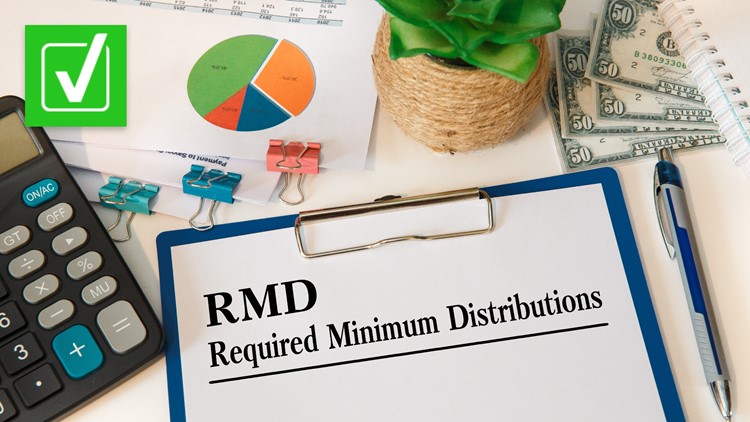Retirees in the United States cannot keep retirement funds in their accounts indefinitely. Instead, the Internal Revenue Service (IRS) requires seniors to take required minimum distributions (RMDs) from their traditional retirement savings accounts (such as 401Ks) each year, once they reach the mandatory age for making withdrawals.
In 2019, a law known as the SECURE Act increased the age for RMDs from 70 1/2 to 72, according to the IRS. But a VERIFY viewer recently asked in an email if the RMD age is increasing to 73 in 2023.
THE QUESTION
Is the required minimum distribution (RMD) age changing to 73 this year?
THE SOURCES
- H.R.2617 - Consolidated Appropriations Act, 2023
- SECURE 2.0 Act of 2022
- Internal Revenue Service (IRS)
- Charles Schwab Corporation
- Fidelity Investments
- The Motley Fool, a private financial and investing advice company based in Alexandria, Virginia
THE ANSWER
Yes, the required minimum distribution (RMD) age is changing to 73 this year.
WHAT WE FOUND
On Dec. 29, 2022, President Joe Biden signed the Consolidated Appropriations Act, 2023 (H.R.2617) into law. The $1.7 trillion spending bill will keep the federal government operating through the end of the federal budget year in September 2023.
Included in the 4,155-page bill is a retirement package known as the SECURE 2.0 Act of 2022. The new legislation builds on the original SECURE Act, which was approved by Congress and signed into law in 2019. The SECURE Act of 2019 increased the age for required minimum distributions (RMDs) from 70 1/2 to 72.
One of the most notable provisions of the SECURE 2.0 Act is that the bill increases the age at which individuals must begin taking RMDs from their retirement account from 72 to 73, starting on Jan. 1, 2023. The SECURE 2.0 Act will also eventually increase the RMD age to 75, beginning on Jan. 1, 2033.
The Motley Fool, a private financial and investing advice company based in Alexandria, Virginia, explains in an article on its website that if a person turned 72 in 2022 or earlier, they will need to continue taking their RMDs as usual. But if a person is turning 72 in 2023, they can choose to wait an extra year.
This means if you turned 72 in 2022 or earlier, you will need to continue taking RMDs as scheduled. But if you're turning 72 in 2023 and have already scheduled your withdrawal, you may want to consider updating your withdrawal plan, according to Fidelity Investments.
“Those celebrating their 72nd birthday in 2023 will need to take their first RMD by Dec. 31, 2024, or delay the initial RMD until April 1, 2025,” The Motley Fool says. “But if you choose to delay until April 2025, you'll need to take a second RMD for the same year by Dec. 31, 2025.”
In addition to increasing the RMD age to 73, the SECURE 2.0 Act also reduces penalties for individuals who fail to take RMDs. It also changes the size of catch-up contributions for workers aged 60 to 63 with workplace plans, according to The Motley Fool, Fidelity Investments, and the Charles Schwab Corporation. Other significant SECURE 2.0 Act provisions include:
- Employees who have a Roth 401(k) won't have to take RMDs from the account starting in 2024.
- Employers have the option to match student loan payments with a contribution to the employee's retirement plan account beginning in 2024.
- Employers will also have the option to allow employees to create "rainy-day funds" in their retirement plan.
- Victims of domestic abuse can withdraw up to $10,000 penalty-free from their retirement plan account.
- Individuals can withdraw up to $22,000 from an employer-sponsored plan or an IRA for federally declared disasters.
- Individuals can roll up to $35,000 from a 529 that has been in existence for at least 15 years to a Roth IRA in the name of the student beneficiary.
- Long-term part-time workers will become eligible for their company's retirement plan after two consecutive years with at least 500 hours of service.
- The creation of a "retirement savings lost and found" national database that will help individuals find their benefits if they changed jobs, or if the company they worked for moved, changed its name or merged with a different company.
The Associated Press contributed to this report.



